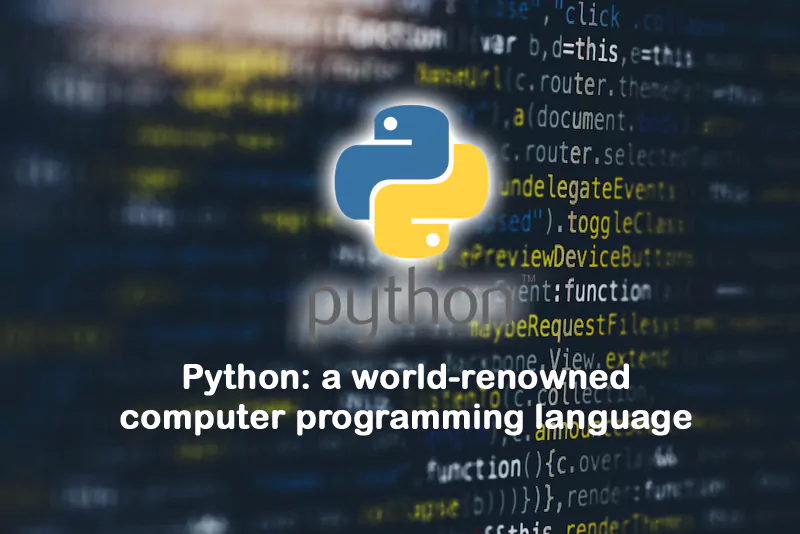
Renowned for its powerful and easy-to-use features, Python is used by web developers in sectors as varied as Finance, Health, ICT, or even Education by multinationals such as Google or Amazon. There are also diverse frameworks (apps built with Django can be seen everywhere now).
Launched in 1992, Python is now used by more than 15 million developers worldwide. Now, it is the world’s second most used programming language after JavaScript, with a 15.42% market share.
In recent years, the number of open positions for Python developers has increased considerably. There is currently an impressive selection of job offers worldwide for Python-related positions. This is twice as much as for Java-related positions. Most Python users are between the ages of 21 and 29, and they can expect to earn up to $118,000 per year!
In order to speed up the handling of Python and facilitate its use, many frameworks have been developed. They offer a structure to Python and allow developers to focus on writing and running programs rather than on routine details. In this article, we offer you to learn more about Python to fully understand whether it suits your needs.
Table of Contents
The essentials
- Python is a powerful language for developing and administering complex computer systems.
- Frameworks facilitate development processes and eliminate protocol details to allow developers better productivity and performance.
- The five frameworks that are most commonly used are Django, Flask, Pyramid, Bottle, and Tornado. They are distinguished from each other by their mode of operation and by their use made of them by developers.
What is Python for?
Python is a powerful and versatile computer language used in web development (creation and administration of sites, software, or applications) but also in fields as advanced as data science, artificial intelligence, or machine learning.
According to a study by Stack Overflow, 41% of programmers have made Python their preferred computer language, dedicating it as an essential programming tool on the world stage.
What is a Python framework, and why use it?
Very simply, a framework is a set of various features that facilitates development and programming.
Frameworks make it possible to automate the implementation of IT solutions, reduce development time and treat common slag and defects.
Therefore, they offer a structure to Python and make it possible to orient it according to the development needs.
A “Python” framework is distinguished from a classic one in that it was specially designed to be used with Python and not with another computer language, such as Java.
Python frameworks, therefore, work a bit like databases for developers. They are reliable resources that allow them to expand their horizons while ensuring speed of execution and ease of handling.
How many frameworks are there?
There are about fifteen Python frameworks, even if the vast majority of developers focus on using two: Django and Flask. Here is a non-exhaustive list of Python frameworks:
- Django.
- Flask.
- Pyramid.
- Bottle.
- Tornado.
- BlueBream.
- CherryPy.
- Dash.
- CubicWeb.
- Groc.
- Growler.
- Sanic.
- FastAPI.
Even though they have different features, they all allow you to rely on a generic basis to prevent developers from starting from scratch and having to build everything themselves.
How to utilize frameworks
Frameworks provide developers with pre-written code, libraries, templates, and guidelines for organizing the structure of an application. Developers need to competently implement these ready-made solutions in product development as efficiently as possible.
The developer must follow the structure and rules and apply classes and methods in accordance with the documentation. If a developer encounters the use of a particular framework in his work for the first time, then he needs to go through the following steps:
- Studying the documentation: reading the documentation to understand the basic features and capabilities of the framework.
- Project planning: defining the requirements for the project and planning its structure in accordance with the architecture of the framework.
- Installation: deployment of the framework, its components, and necessary additional tools.
- Configuration: customizing the framework based on project requirements.
- Development: writing code using the functionality of the framework.
- Testing: checking the finished functionality and eliminating errors.
- Deploy: placing the project in the working environment.
Specific stages and their sequence may vary depending on the task and priorities in the developer’s work.
How to choose a framework?
To determine which framework would best suit you, it is important to set several criteria and ask yourself the right questions.
Indeed, the choice of a framework is made not only from its features but also according to its ease of use or its speed of deployment, for example.
In any case, you will need to know in advance what type of project you want to undertake: if you cooperate with a development company, everything will be pre-discussed during the project discovery phase. The choice of framework actually depends very strongly on the size and the scale but also on the complexity of the project you want to carry out.







